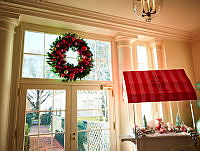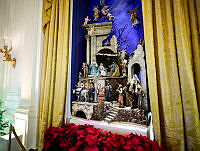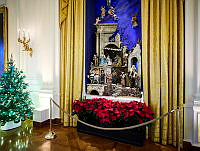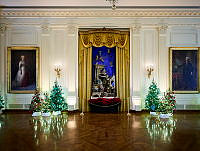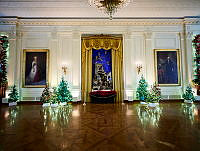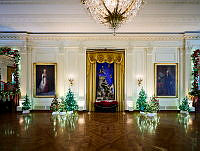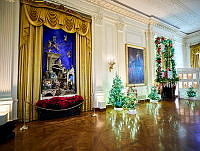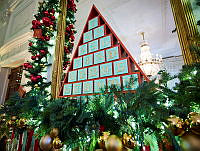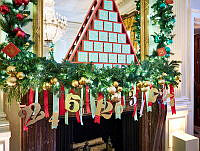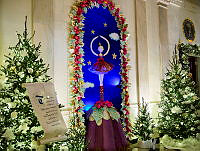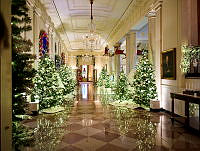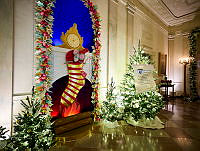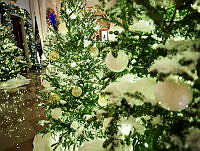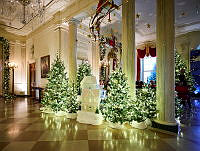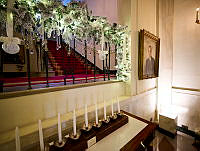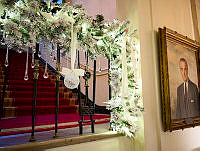An Essay on "Lafayette Square" by Peter Waddell
Once the White House Overlooked a Residential Neighborhood, 1902
Copyright © White House Historical Association. All rights reserved under international copyright conventions. No part of this article may be reproduced or utilized in any form or by any means, electronic or mechanical, including photocopying, recording, or by any information storage and retrieval system, without permission in writing from the publisher. Requests for reprint permissions should be addressed to books@whha.org

Peter Waddell, Lafayette Square, oil on canvas, 48 x 60.
Peter Waddell for the White House Historical AssociationPeter Waddell's painting re-creates the historic square north of the White House in 1902, the year President Theodore Roosevelt remodeled the house. To the right of the White House, one can see that the conservatories have been removed from the roof of President Thomas Jefferson's west terrace. At the end of this terrace the Temporary Executive Office is under construction. It would later become the West Wing. Construction on the east or left side of the house has begun to replace the east terrace, demolished in 1866. This will become the new social entrance. At that time, the area around Lafayette Square was still residential, so the White House still projected the large scale that had set it apart for a century.
The artist has placed you well above the rooftops, higher than any place to which you could have climbed. Sixteenth Street, immediately below you, is part of an axis in the city plan that pierces the White House and intersects a similar axis from the Capitol on the Mall beyond it. At the intersection Peter (Pierre) L'Enfant, planner of the city, envisioned a monument to George Washington, but when the Washington Monument was finally built, it was moved, as you see here, to avoid the original sites marshy ground.
Lafayette Park, which the square surrounds, was commissioned by President James Monroe in the early 1820s, and later named in honor of General Marquis de Lafayette. Andrew Jackson's statue on his rearing horse Sam Patch became the centerpiece of the park in 1853, an American masterpiece in bronze. Of interest along the Square are steepled Saint John's Church at the bottom of the picture, and to the left, the house on the corner was where the widowed Dolley Madison lived for the last thirteen years of her life. Directly across the Square from Mrs. Madison's house is the historic Commodore Stephen Decatur House, built in 1818-1819 and rich in history, now home of the David M. Rubenstein National Center for White House History, under the auspices of the White House Historical Association.
After many years of alteration and demolition, the low-scale residential quality of Lafayette Square has been restored, thanks to the vision of President John F. Kennedy and First Lady Jacqueline Kennedy. Once again it is possible to sense the original scale and setting of the White House in a tranquil context of old houses, heroic monuments, big trees, and the Parks winding paths and carpet lawns.
















